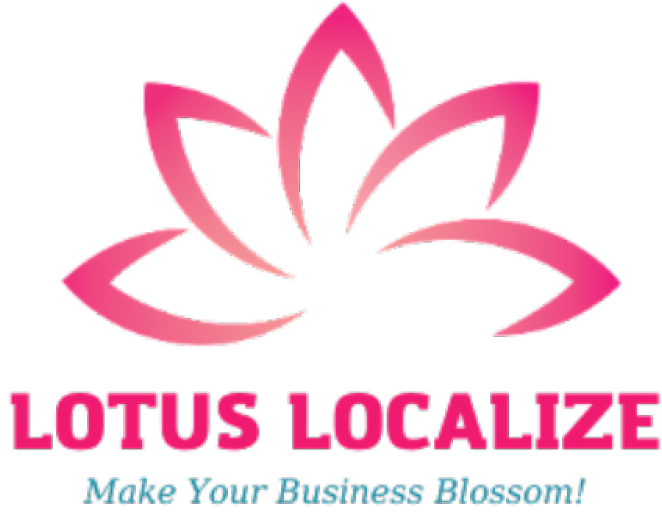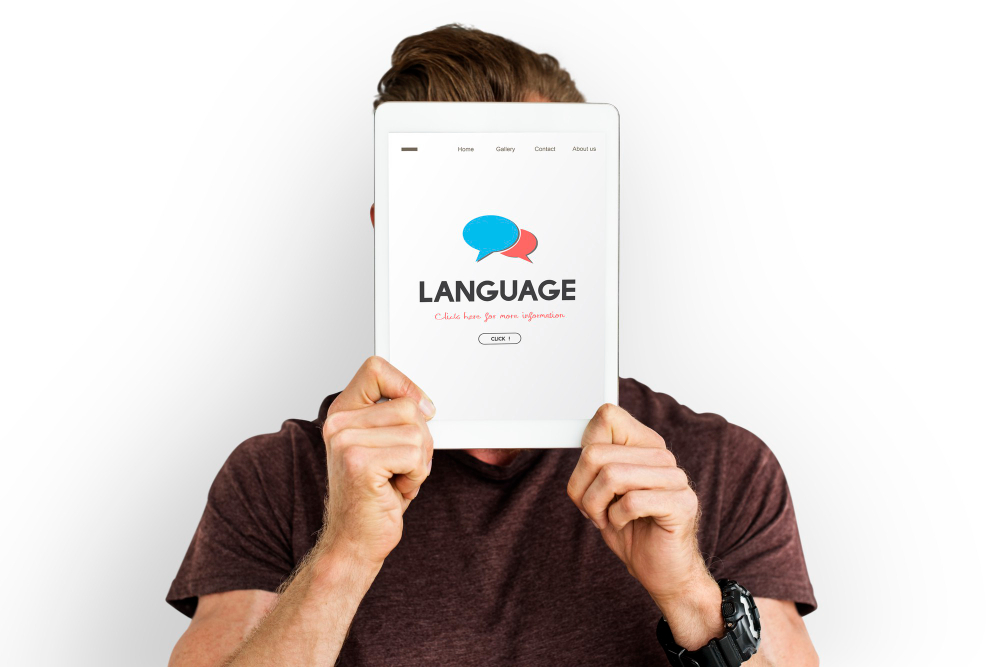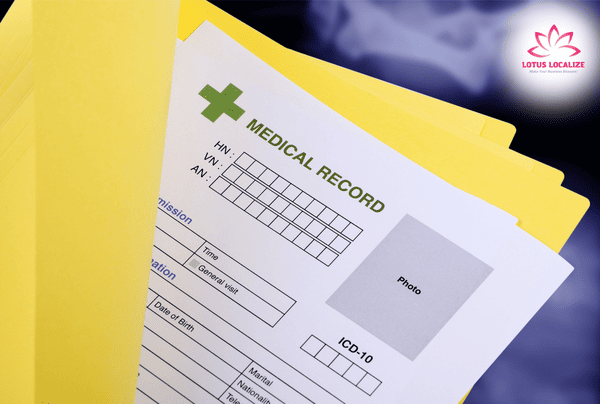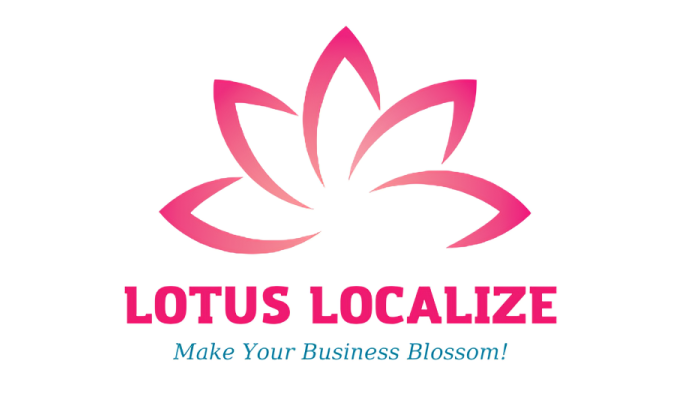
What is medical localization? Everything you need to know
Medical localization has become an essential process for ensuring that medical content is accessible, accurate, and culturally appropriate for diverse populations. Medical localization involves more than just translation; it adapts medical documents, software, and services to fit the linguistic, cultural, and regulatory needs of a specific region. In this article, we’ll explore what medical localization is, why it’s important, and how it benefits both healthcare providers and patients worldwide.
What is medical localization?
Medical localization goes beyond words, involving the adaptation of visuals, formats, and even medical terms to ensure the content is both accurate and culturally relevant.

Medical localization is the process of adapting medical content to meet the cultural, linguistic, and regulatory requirements of a specific region or audience. This involves more than just translating the text; it includes adjusting the content, images, symbols, units of measurement, and even the format to ensure it is appropriate, accurate, and compliant with local standards and practices.
The goal of medical localization is to make sure that healthcare information, whether it’s for patient education, clinical trials, or medical software, is relevant, understandable, and usable for the target audience.
Medical translation and medical localization share common features that ensure the accurate adaptation of healthcare materials across languages and regions.
- Accuracy in medical terminology: Both ensure precise use of medical terms to maintain clarity and avoid errors.
- Cultural sensitivity: Adapt content to align with the cultural norms and healthcare practices of the target audience.
- Regulatory compliance: Meet the local legal and regulatory standards to ensure safety and approval.
- Focus on patient safety: Prioritize clear, understandable, and accurate communication to protect patients.
- Specialized expertise: Require professionals with knowledge in both medical fields and linguistic nuances.
Together, these features make medical translation and localization indispensable for effective global healthcare communication, but they also have different features:
| Aspect | Medical localization | Medical translation |
| Definition | Adapting medical content to meet cultural, linguistic, and regulatory needs of a specific region. | Converting text from one language to another, maintaining meaning and accuracy. |
| Scope | Involves cultural, linguistic, and legal adaptation of content, including images, formats, and measurements. | Focuses only on the linguistic conversion of text, without regard for cultural or regional adjustments. |
| Goal | Ensure content is culturally appropriate, accurate, and legally compliant for the target audience. | Preserve the original meaning and medical terminology in the target language. |
| Cultural adaptation | Adjusts images, symbols, colors, and content to align with cultural norms and practices. | No adjustments made to cultural content or visuals. |
| Regulatory compliance | Ensures content meets local legal and healthcare regulations (e.g., FDA, CE). | No consideration of local regulations or laws. |
| Target audience | Tailored for a specific region or population, considering local healthcare practices. | Targeted at a language-speaking group, without considering local healthcare context. |
| Examples | Adapting patient education materials for a specific country, adjusting dosage units. | Translating a medical research paper from English to Spanish, for reading purpose. |
| Process | Involves translation + additional adaptation (e.g., adjusting terminology, visuals, and legal requirements). | Involves only translating the text from one language to another. |
In essence, while translation deals with the language itself, localization ensures that the content is culturally and contextually relevant, making it ready for use in a specific locale. Both processes are critical for the global healthcare industry to provide safe, effective, and culturally sensitive care.
Read more: How biomedicine translation fuels innovation in global health
Why is medical localization crucial?
Medical localization is crucial for several reasons, particularly in ensuring that healthcare content is accessible, understandable, and effective across different regions and cultures. Here are key reasons why medical localization is important:
Ensures cultural appropriateness
Medical content must be culturally sensitive and relevant to the target audience. Localization adapts materials, such as patient information, health brochures, or pharmaceutical packaging, to align with cultural norms, values, and beliefs, ensuring the message resonates with the intended audience.
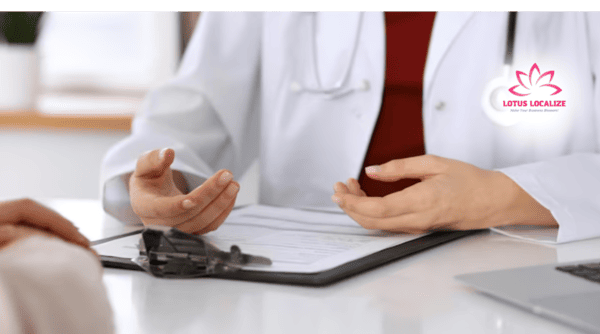
Adheres to local regulations and compliance
Different countries and regions have their own healthcare regulations and standards. Localization ensures that medical materials comply with local laws, such as those governing drug labeling, clinical trials, or medical device usage. This helps avoid legal issues and ensures safety and efficacy.
Improves patient understanding and safety
Clear communication is vital in healthcare. Localization takes into account language nuances and specific healthcare terminology, ensuring that patients fully understand instructions, prescriptions, and medical advice. This reduces the risk of misunderstandings and improves patient safety.
Facilitates access to global markets
For pharmaceutical companies, medical device manufacturers, and healthcare providers, localization enables them to expand their reach to diverse international markets. By adapting products and materials for local languages and practices, organizations can enter new markets while ensuring compliance and relevance.
Enhances clinical trial success
In clinical trials, accurate communication with participants from various regions is essential. Medical localization ensures that trial documents, informed consent forms, and participant instructions are comprehensible and legally valid in different languages and regions, improving the quality and inclusivity of the study.
Boosts trust and credibility
When medical information is localized correctly, it helps establish trust between healthcare providers, patients, and medical companies. Proper localization shows that an organization cares about its global audience’s needs, fostering credibility and positive relationships.
Medical localization is essential for ensuring that healthcare products, services, and information are effectively communicated, safe, and legally compliant across diverse regions and cultures. It plays a vital role in delivering quality healthcare on a global scale.
Key areas of medical localization
Medical localization covers a range of key areas to ensure that healthcare materials, products, and services are appropriately adapted to the language, culture, and regulatory standards of a specific region. Here are the key areas of medical localization:
Patient information and education materials
- Purpose: To provide clear and understandable health information to patients in their native language.
- Examples: Brochures, patient consent forms, discharge instructions, and medication guides.
- Localization focus: Language translation, cultural sensitivity, and ensuring that complex medical terminology is simplified and culturally appropriate.

Pharmaceutical packaging and labeling
- Purpose: To ensure that drug packaging complies with local regulations and is understandable by patients and healthcare providers.
- Examples: Labels, instructions for use, and packaging designs.
- Localization focus: Translation of drug names, dosage instructions, warnings, and adherence to local regulatory standards (e.g., FDA in the U.S., EMA in Europe).
Medical devices and equipment instructions
- Purpose: To provide clear instructions on the proper use of medical devices and equipment, ensuring safety and compliance.
- Examples: Instruction manuals, product labels, safety warnings, and operational guides.
- Localization focus: Translating technical terms, adapting measurements (e.g., units of weight, volume), and ensuring that instructions align with local healthcare standards.
Regulatory and compliance documents
- Purpose: To ensure that medical products meet the regulatory requirements of various countries or regions.
- Examples: Regulatory submissions, approval documentation, and compliance reports.
- Localization focus: Translating documents in accordance with local laws and regulatory bodies, such as the FDA, EMA, or local health authorities.
Medical software and applications
- Purpose: To adapt medical software, including Electronic Health Records (EHR), telemedicine platforms, and mobile health apps, for use in different languages and regions.
- Examples: Software interfaces, user guides, and mobile health applications.
- Localization focus: Translating interface elements, adapting date/time formats, measurements, and ensuring the software complies with local healthcare regulations.
Marketing and promotional materials
- Purpose: To promote medical products, services, or healthcare institutions in a culturally sensitive and appropriate manner.
- Examples: Advertisements, websites, brochures, and social media campaigns.
- Localization focus: Cultural adaptation of messages, visuals, and tones to ensure the marketing material resonates with local audiences while adhering to advertising regulations.
Medical localization covers a broad range of areas, from patient education to compliance documentation, all aimed at ensuring healthcare materials, products, and services are appropriately adapted to meet local linguistic, cultural, and regulatory requirements. This is essential for ensuring patient safety, improving healthcare delivery, and facilitating the global reach of medical products and services.
Read more: Why can clinical trial translation unlock global potential in medical research?
Common challenges in medical localization
Medical localization is a complex process that involves adapting healthcare materials, products, and services for specific regions and cultures. While it is crucial for global healthcare delivery, several challenges may arise during the localization process:
Cultural sensitivity and nuances
Medical content needs to be culturally appropriate for each region, as certain terms, concepts, or visuals may not resonate with local populations. For instance, healthcare practices, beliefs, and attitudes towards illness vary widely, requiring careful adaptation to ensure the content is well-received and understood.

Complex medical terminology
Medical language is highly specialized, with terms that may not have direct equivalents in other languages. Translators and localizers need to ensure that technical terms are accurately conveyed, simplifying complex language when necessary without losing medical accuracy.
Regulatory and compliance issues
Each country has its own regulatory requirements for healthcare products and materials, including pharmaceuticals, medical devices, and health-related content. Ensuring compliance with local laws, such as FDA or EMA regulations, can be a challenge, especially when documentation must be updated for each market.
Translation quality and accuracy
The accuracy of medical translation is vital to patient safety, making it critical that translators are not only fluent in the target language but also have a deep understanding of medical terminology and context. Any mistranslation could result in severe consequences, including medical errors.
Medical localization is an intricate process that requires balancing accuracy, cultural relevance, regulatory compliance, and technical considerations. Addressing these challenges ensures that medical products and services are accessible, effective, and safe for global audiences.
To overcome common challenges in medical localization, implementing effective solutions is essential:
- Addressing cultural sensitivity and nuances: Conduct thorough cultural research and collaborate with local healthcare experts to adapt content that aligns with regional beliefs and practices.
- Simplifying complex medical terminology: Employ specialized medical translators who can accurately convey technical terms and simplify complex language without compromising accuracy.
- Ensuring regulatory compliance: Partner with legal and regulatory consultants to stay updated on regional healthcare laws and integrate compliance checks throughout the localization process.
- Maintaining translation quality and accuracy: Use certified medical translators, double-check work with subject-matter experts, and adopt robust quality assurance processes to minimize errors
By tackling these challenges systematically, medical localization can achieve its goal of delivering safe, effective, and culturally relevant healthcare solutions to diverse audiences worldwide.
Best practices for medical localization
Best practices for medical localization ensure that healthcare materials, products, and services are accurately adapted to meet the linguistic, cultural, and regulatory needs of different regions. Here are key best practices to follow:
Collaborate with medical experts
Engage professionals with expertise in both the medical field and the target language. Medical translators should have a deep understanding of medical terminology and be familiar with healthcare systems in the region to ensure accuracy and clarity.

Cultural sensitivity and customization
Always consider cultural nuances when adapting content. What works in one region may not be appropriate in another, so it’s essential to adapt healthcare messages to resonate with local customs, traditions, and values. This includes modifying imagery, symbols, and phrasing to align with local sensibilities.
Ensure regulatory compliance
Understand and follow the specific regulatory requirements of each region. Different countries have their own laws and guidelines for healthcare products, including labeling, advertising, and medical device instructions. Work with local legal experts to ensure all content complies with regional regulations, such as FDA (U.S.), EMA (Europe), and other local health authorities.
Use qualified translators
Choose translators with proven experience in medical localization. Medical translation requires not only language proficiency but also knowledge of medical practices, terminology, and legal requirements. Certified medical translators help mitigate the risk of errors that could jeopardize patient safety.
Prioritize patient safety
Above all, ensure that all localized medical materials are clear, accurate, and easy for patients to understand. Medical errors due to miscommunication or translation mistakes can have serious consequences, so it’s critical that instructions, warnings, and dosage information are correctly localized.
By following these best practices, healthcare providers and companies can ensure that their products, services, and communications are effectively localized to meet the needs of diverse populations while complying with local regulations.
The future of medical localization
The future of medical localization is set to be shaped by rapid advancements in technology, changing regulatory landscapes, and increasing globalization of healthcare. As healthcare providers and pharmaceutical companies expand their reach to global markets, the demand for accurate and culturally sensitive medical localization will continue to grow. Here are some key trends and factors that will define the future of medical localization:
AI and automation integration
The integration of AI and machine learning in medical translation and localization will streamline workflows and enhance efficiency. AI-powered translation tools and automated localization platforms will help speed up the process, while advanced algorithms ensure higher accuracy. However, human expertise will still be required to handle nuanced, complex medical content, ensuring the highest standards of quality.
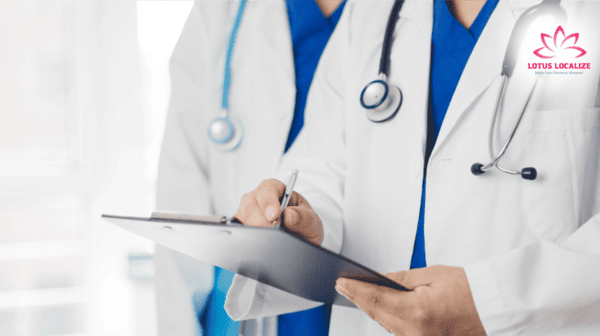
Expansion of telemedicine and digital health
With the rise of telemedicine and digital health platforms, medical localization will play a critical role in ensuring accessibility and inclusivity for patients worldwide. These services must be adapted to multiple languages and cultural contexts to cater to diverse populations. Ensuring seamless communication between patients and healthcare providers will be a primary concern.
Increased focus on cultural sensitivity
As cultural sensitivity becomes an essential aspect of healthcare delivery, medical localization will go beyond language translation. The future will see a stronger emphasis on adapting healthcare content to local values, beliefs, and practices. For example, healthcare providers will need to consider cultural preferences in treatment plans, patient education, and even the design of healthcare products and services.
Personalized healthcare communication
Personalized healthcare is a growing trend, and medical localization will increasingly focus on tailoring content for individual patient needs. This includes providing localized health information based on genetic, environmental, and lifestyle factors. In the future, we may see more customized, culturally relevant content delivered through digital platforms, ensuring that patients receive information that resonates with their unique situations.
The future of medical localization promises a more interconnected, inclusive, and efficient healthcare system. Technological advancements will simplify many aspects of localization, but the need for human expertise and cultural understanding will remain paramount. As healthcare continues to globalize, the demand for high-quality medical localization services will be crucial to ensure that health information and services are accessible, accurate, and culturally relevant for diverse populations around the world.
Lotus Localize: expert medical localization for global success
Lotus Localize specializes in providing comprehensive medical localization services that help your healthcare products, materials, and services effectively reach international audiences.

Our experienced team ensures precise, culturally appropriate, and compliant translations across various regions, empowering you to expand your global presence with confidence.




Partner with Lotus Localize for seamless and effective medical localization that guarantees quality, compliance, and global reach!
As the healthcare industry continues to expand internationally, the need for accurate and culturally sensitive medical localization will only grow. By implementing best practices in medical localization, organizations can enhance patient care, build trust with global audiences, and ensure that their products and services meet the highest standards across all markets.
If you have any questions or need assistance with translation services for many industries: life science translation, education translation, technology translation, financial translation, marketing translation, manufacturing translation, government translation,… and interpretation services, localization services: game localization, software localization, website localization,… please contact Lotus Localize immediately at 0866 224 968 or visit the website: lotus-localize.com for advice on the best solutions!
QUALITY PROMISE
Lotus Localize offers consistent, high-quality service delivery in all customer engagements. Our in-house translators and staff adhere to well-established business processes, allowing us to communicate properly, deliver on time, and surpass client expectations.
